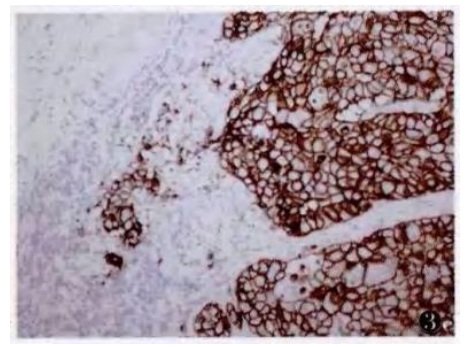Study on the correlation between ultrasonic signs and molecular biological expression in breast cancer

Published 31-12-2024
Keywords
- Breast Cancer,
- Ultrasound,
- Molecular Markers
Copyright (c) 2024 Cambridge Science Advance

This work is licensed under a Creative Commons Attribution-NonCommercial 4.0 International License.
How to Cite
Abstract
Objective: To explore the correlation between ultrasonic signs and molecular biological expression in breast cancer, in order to improve the diagnostic level of ultrasound for breast cancer and provide reliable imaging information for the treatment and prognosis assessment of breast cancer. Methods: A total of 50 patients with breast cancer confirmed by surgical pathology were randomly selected and underwent high-frequency breast ultrasound examination, focusing on observing the shape, edge, posterior echo, microcalcification, internal blood flow, and axillary lymph nodes of the mass; immunohistochemistry was used to detect the expression of ER, PR, and CerbB-2 genes, and their relationship with ultrasound performance was analyzed. Results: ① The detection rate of microcalcification in breast cancer <2cm was the highest, followed by spiculated edge; the detection rate of irregular shape was higher in tumors >2cm. ② The positive rate of ER and PR in patients with a tumor aspect ratio >1 was 77.8% and 61.1%, respectively, which was higher than those with an aspect ratio ≤1 (P<0.05); ③ The positive rate of ER and PR in patients with spiculated edge signs was 65.5% and 55.2%, respectively, which was higher than those without spiculated edge (P<0.05); ④ The positive rate of ER and PR in patients with peripheral high echo dizzy was 73.3% and 60.0%, respectively, both higher than those without high echo dizzy (P<0.05); ⑤ The positive rate of PR in patients with anechoic area was 22.2%, lower than those without anechoic area (P<0.05); ⑥ The positive rate of CerbB-2 in patients with microcalcification was 83.3%, higher than those without microcalcification (P<0.05). Conclusion: There is a certain relationship between the ultrasound performance of breast cancer and the expression of molecular biological indicators, and the biological characteristics of the tumor affect the ultrasound performance of breast cancer. Ultrasound examination can provide imaging basis for the prognosis assessment and clinical treatment selection of breast cancer.
References
- Ding Li yang, Shen Gao Ei. A case-control study on risk factors for breast cancer [J]. Chinese Journal of Chronic Disease Prevention and Control, 1998, 7(6): 283-285.
- Huang Xiaolan, Hong Chun Rong, Wang Jing, et al. A survey of knowledge, behavior, and needs among breast cancer patients in Changning District, Shanghai [J]. Chinese Health Education, 2009, 25(9): 714-715.
- A Thomas DT, CL Rapp MAD. Solid breast nodules: use of sonography to distinguish between benign and malignant lesions[J]. Radiology,1995,3:121-124.
- Hu Chun ling. The value of color Doppler ultrasound imaging in the differential diagnosis of benign and malignant breast nodules [J]. Medical Imaging and Clinical Diagnosis, 2010, 3(23): 219.
- Sun Qiang. Early diagnosis of breast cancer [J]. Practical Medical Journal, 2007, 23(1): 1-3.
- Zhu Qing li, Jiang Yuxin, Sun Qiang, et al. The correlation between breast cancer ultrasound signs and pathological histological types and grading [J]. Chinese Journal of Ultrasound in Medicine, 2005, 4(9): 674-677.
- Pan Liling, Wang Liang Yu, Zhou Rui li. Analysis of the differential diagnosis of breast masses by color Doppler ultrasound [J]. Journal of Clinical Ultrasound Medicine, 2006, 8(8): 478-479.
